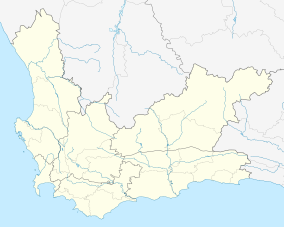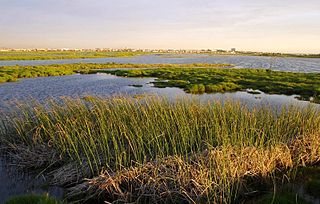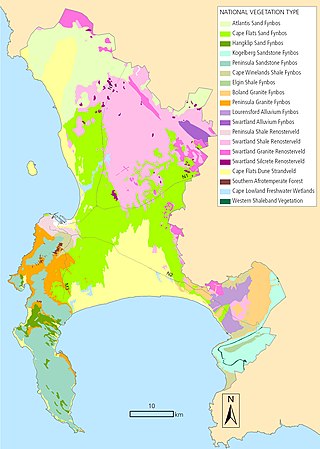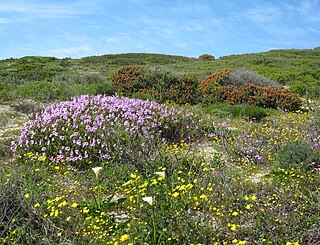| Table Bay Nature Reserve | |
|---|---|
 | |
| Location | Milnerton, Western Cape, South Africa |
| Coordinates | 33°50′45″S18°30′01″E / 33.84579°S 18.50039°E |
| Area | 880 hectares (8.8 km2) |
| Governing body | City of Cape Town |
| www | |
The Table Bay Nature Reserve is an 880-hectare (2,200-acre) nature reserve in Milnerton, Western Cape, South Africa. It consists of several smaller constituent reserves including Rietvlei Wetland Reserve, Diep River Fynbos Corridor, Zoarvlei Wetlands, Milnerton Racecourse Nature Reserve, and Milnerton Lagoon, as well as surrounding protected areas. These adjacent reserves were amalgamated on 27 June 2012, in order to improve the biodiversity management in the built-up area. It is managed by the City of Cape Town's Environmental Resource Management Department, with offices at Rietvlei. [1]
Contents
The Table Bay Nature Reserve forms the southernmost buffer area of the Cape West Coast Biosphere Reserve, and links it to the edge of Cape Town's city centre. It also contains a large portion of the critically endangered lowland habitats remaining in Cape Town.
The central feature in the Table Bay Nature Reserve is the Rietvlei wetland system. The Rietvlei Wetlands and Milnerton Lagoon were proclaimed as a Nature Area on 3 August 1984, in proclamation number 1632 of Provincial Gazette No. 9345. The Nature Reserve is partly owned by the City of Cape Town and the World Wildlife Fund for Nature – South Africa, who own two of the Erven. The City of Cape Town manages these two Erven on a 99-year lease for the purposes of nature conservation. [1]






